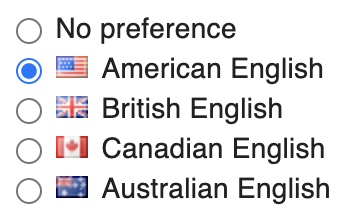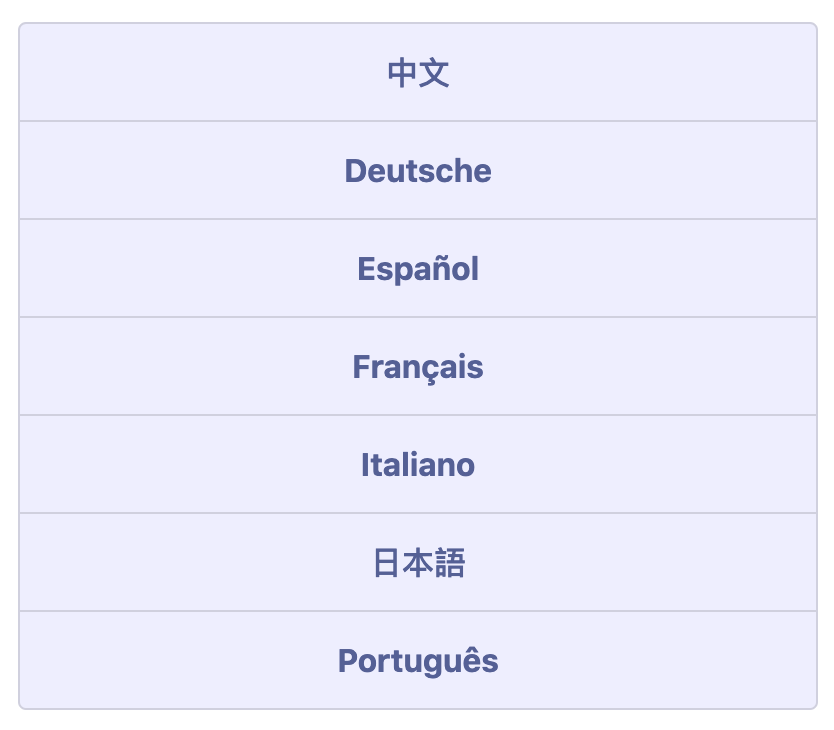Top multilingual grammar checkers and language model assistants
Table of Contents
Globalization has led to an increasing amount of communication between companies in different countries with different languages and customs. Software tools can often help overcome communication barriers. This article reviews tools for written communication, in particular focusing on writing and language model assistants.
Business use case
Grammar checkers (such as Grammarly or Microsoft Editor) as well as language model assistants (such as Sapling) can help business professionals proof and save time when composing replies.
The most popular tools are in English, with no or limited support for other languages. This is surprising, as of course only a fraction of the world uses English for written communication. For larger businesses especially, support, sales, and other functions must use different languages depending on the region they fall under.
This article covers some of the grammar checkers and language model assistants that do support multiple languages. We'll briefly discuss alternative approaches, then do a comparison of the multilingual solutions available. Finally, we discuss some of the considerations when picking a solution.
Alternative approaches
Why not translation?
Machine translation systems, such as Google Translate, have become much better over the last decade.
The biggest upheaval in translation systems of the last 30 years occurred in 2014, when researchers at Google and the Mila Institute separately found that neural network-based systems ("deep learning"), trained end-to-end to ingest input sentences in one language and output the corresponding sentences in another language, could match existing statistical systems. Since then, deep learning systems have significantly exceeded the performance of statistical systems.
One possible way to handle conversations would be to simply compose messages in the language most familiar to the sender, then translate the messages to the recipient's language before sending them to the recipient. Assuming the translation system was perfect, this should work well.
While this can be workable, sometimes things are, as they say, lost in translation. Translation systems frequently drop subtleness or some of the meaning, especially for esoteric or highly-specific topics. Besides that, they can also introduce grammar and fluency issues, or add other artifacts that researchers have dubbed translationese.
In the worst case, the system can hallucinate information that was not originally present, as shown in this old recording of Google Translate being fed a pathological sequence of Japanese characters, and generating nonsensical output.

Using different or multiple solutions
As another alternative, users who need to handle multiple languages or languages besides English can use tools specifically tailored to other languages, or multiple tools (for example, multiple browser extensions) at once.
Is there a Grammarly for Spanish? This is a question asked by those looking for single language tools. Using a tool specifically for another language (for example, Spanish), is certainly a viable option if you're only using Spanish for communication. However, if you're reading this article, this is likely not the case. Unfortunately, languages besides English also often have less data or developer libraries to work with. Multilingual systems can sometimes leverage data from multiple languages at once to cope with this.
Another consideration is using multiple tools instead of a single, multilingual solution. We view this more as a user interface issue. Sometimes tools (e.g., those accessed via browser extensions) can conflict with one another when edits are applied to the text, or obscure each others suggestions. You'll also have to manage settings across the different tools. As with other alternatives, this is workable, but not ideal.
Common languages
Before we discuss multilingual solutions, what are some of the common languages that are used in business communication?
Variations
Before discussing different languages, we should consider variations (dialects, vernaculars) within languages.
Take English as an example. There's American English, British English, Canadian English, Indian English, Philippine English, and so on. Within the U.S., Southern English includes some terms that are rarely used elsewhere. With Spanish as well, Latin American Spanish has many differences from European Spanish, with differences within those groupings as well. Some more examples:
- European Portuguese vs. Brazilian Portuguese
- European French vs. French Canadian

There are many axes of variation—we can also consider informal vs. formal, as an example—but all this is to say that systems must be flexible and accommodate variation.
7 languages (besides English)
Based on our experiences and surveys we've encountered, here are commonly used languages in business communication:
- Chinese
- French
- German
- Italian
- Japanese
- Portuguese
- Spanish

This is of course by no means exhaustive. However, for business teams looking for a solution that supports many languages, but are unclear on what languages to include in an initial evaluation, this list can serve as a starting point when evaluating potential vendors.
Solution Providers
- Sapling
- LanguageTool
- Microsoft Editor
Let's go through them one at a time.
Are there ones that we missed? Let us know: team@sapling.ai
Sapling

Sapling, like many other solutions, was first developed for English. As we heard feedback from customers, however, we realized that we needed to add multilingual support, and currently offers spelling and grammar suggestions for 11 different languages, with spelling support for another 18 languages, for a total of 29 languages. Sapling offers an option to auto-detect the language currently being used, allowing users to switch between languages on different applications without having to update their Sapling settings each time.
As it was designed for business teams, Sapling has many features (dictionary, custom mappings, analytics) built for team managers. Unlike many other systems, Sapling provides suggestions that go beyond spelling and grammar, and also offers solutions such as autocomplete and suggested responses for support, sales, and success teams.
As of this writing, Sapling supports 29 different languages (Link), and you can specify your language setting in the user dashboard after signing up.
LanguageTool

LanguageTool is one of the oldest and most popular grammar checkers. It offers integrations for many browsers and platforms.
LanguageTool is also active in the open source community, and provides support for over 20 languages. That said, support for different languages varies a great deal—you can view some of the statistics here: Link
LanguageTool focuses on grammar check, and does not offer some other language model assistant functionality such as suggested chat responses.
Microsoft Editor

Microsoft Editor provides impressive support for over 20 languages, and can process 3 languages at once. It offers spelling, grammar, and refinement suggestions (such as formality or level of concision). From its feature set, it appears geared towards individual consumers.
If you're already enmeshed in the Microsoft ecosystem (for example, if you already exclusively use Edge and Teams), Editor would be a logical extension.
One concern is that Editor is now integrated with the Microsoft Edge browser, upon which support for other browsers may be less of a priority.
Conclusion
We hope this article explained some of the different considerations when selecting a multilingual language model assistant.
What is the best multilingual grammar check tool and writing assistant? It depends on the use case (whether you're a business professional or part of a particular team), the type of suggestions you're looking for, and your language requirements.
We recommend pasting some text into the different systems above and testing them using the messaging platform you use most frequently.
Obviously, we're biased. You can reach out to us to get started here: https://sapling.ai/contact
Subscribe below to get notified when future posts such as this one are made available.